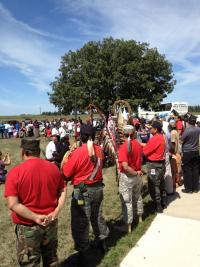
As the commemoration calls attention to important events in U.S. history, many people in Minnesota and globally desire to learn more about the formation and original inhabitants of the United States. It is a unique opportunity for Minnesotans to learn the history of the place they call home.
Some people refer to what occurred in both Minnesota and the nation as the genocide of America's indigenous people. It is a painful subject for many.
People have different ways of learning about the past. For many, it is through oral tradition. Others seek facts in written documents. As we navigate through controversial histories, it is important to honor all ways of knowing.
- 102,001 identify as American Indian, of which 55,000 were solely of Indian descent
- 247,000 are Asian
- 250,000 are Hispanic or Latino
- 328,000 are Black or African American
- 4.6 million are of European descent
Websites
American Indian Communities in Minnesota: Basic Principles. Minnesota State Legislature.
American Indian Health. United States National Library of Medicine
Centers for Disease Control and Prevention
Indian Affairs Council for the State of Minnesota
Indians, Indian Tribes, and State Government. Fourth Edition. Research Department of the Minnesota House of Representatives. Minnesota, 2007.
Kidwell, Clara Sue. The Effects of Removal on American Indian Tribes. Nature Transformed, TeacherServe®. National Humanities Center.
National Center for Education Statistics
Native American Community Development Institute Publications
Suicide Prevention Resource Center
The United States Census Bureau
U.S. Department of Housing and Urban Development
U.S. Department of the Interior Indian Affairs
Get involved
Dakota Lakota Nakota Human Rights Advocacy Coalition
Native American Training Institute
Minneapolis American Indian Center
Waziyatawin




